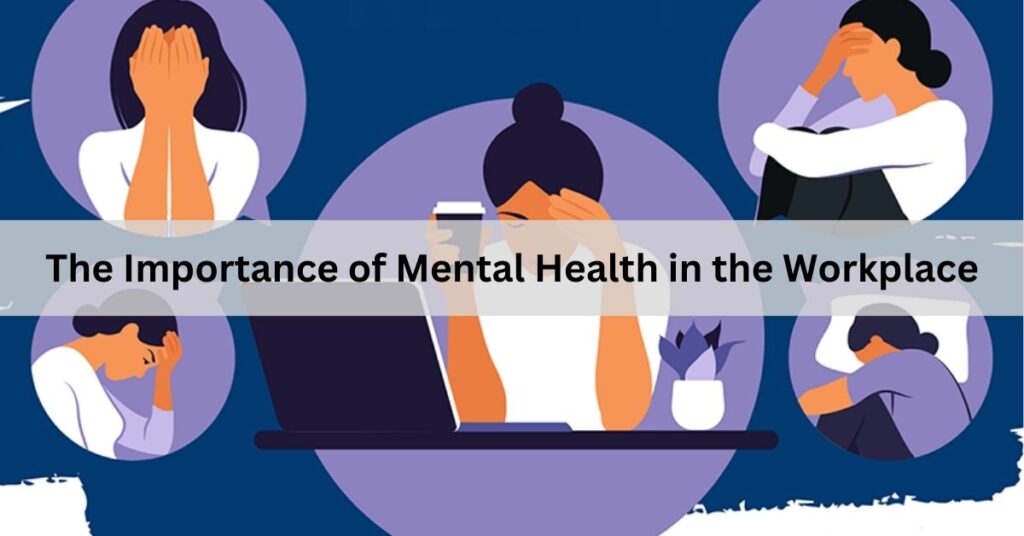In today’s fast-paced work environments, prioritizing mental health is crucial for fostering productivity, engagement, and overall well-being. This article explores the significance of mental health in the workplace, offering practical strategies and resources for both employers and employees to promote a supportive and mentally healthy work environment.
1. Understanding Mental Health in the Workplace
Mental health in the workplace refers to emotional, psychological, and social well-being:
- Impact of Work Environment: Factors such as workload, job satisfaction, relationships with colleagues, and organizational culture influence mental health.
- Common Challenges: Stress, anxiety, burnout, depression, and work-related disorders affect employee performance and job satisfaction.
- Stigma and Awareness: Addressing mental health openly reduces stigma, encourages help-seeking behavior, and promotes a supportive work culture.
2. Benefits of Prioritizing Mental Health
Investing in mental health initiatives yields numerous advantages:
- Enhanced Productivity: Employees with good mental health are more focused, motivated, and productive.
- Reduced Absenteeism and Turnover: Supporting mental well-being decreases absenteeism due to mental health reasons and reduces turnover rates.
- Positive Organizational Culture: Cultivates a supportive, inclusive workplace where employees feel valued, respected, and appreciated.
- Cost Savings: Lower healthcare costs associated with mental health treatment and improved overall organizational performance.
3. Strategies for Employers
Employers can implement proactive measures to support mental health:
- Create Policies and Programs: Develop and implement policies that prioritize mental health, including flexible work hours, stress management programs, and employee assistance programs (EAPs).
- Promote Work-Life Balance: Encourage work-life balance through remote work options, wellness programs, and paid time off for mental health days.
- Training and Awareness: Provide training on mental health awareness, resilience-building, and recognizing signs of distress or burnout.
- Leadership Support: Foster a culture of openness and support from leadership, emphasizing mental health as a priority.
4. Supportive Workplace Environment
Cultivate a positive and supportive workplace culture:
- Communication: Encourage open dialogue about mental health, destigmatizing discussions and promoting empathy and understanding.
- Flexibility: Accommodate reasonable accommodations for employees experiencing mental health challenges, such as flexible schedules or workload adjustments.
- Recognition and Appreciation: Acknowledge employees’ contributions and efforts, boosting morale and job satisfaction.
- Peer Support Networks: Establish peer support groups or mentoring programs to foster connections and solidarity among employees.
5. Strategies for Employees
Employees play an active role in maintaining their mental well-being:
- Self-Care Practices: Incorporate stress-relief techniques, mindfulness exercises, physical activity, and healthy eating habits into daily routines.
- Setting Boundaries: Establish boundaries between work and personal life to prevent burnout and maintain balance.
- Seeking Support: Utilize EAPs, counseling services, or confidential resources offered by the employer or community organizations.
- Professional Development: Pursue opportunities for skill development, career growth, and work satisfaction.
6. Promoting Mental Health Awareness
Raise awareness and reduce stigma through ongoing initiatives:
- Education and Training: Provide workshops, seminars, or webinars on mental health topics, resilience-building, and stress management techniques.
- Campaigns and Events: Organize mental health awareness campaigns, activities, or wellness events to engage employees and promote mental well-being.
- Feedback Mechanisms: Seek feedback from employees on mental health initiatives, ensuring relevance and effectiveness.
7. Conclusion
Prioritizing mental health in the workplace is not only a moral imperative but also a strategic investment in organizational success and employee well-being. By implementing supportive policies, fostering a positive work environment, promoting awareness, and empowering employees to prioritize their mental health, organizations can create a culture where everyone thrives. Together, employers and employees can collaborate to build resilient, healthy workplaces that prioritize mental health as an integral part of overall wellness and professional success.



